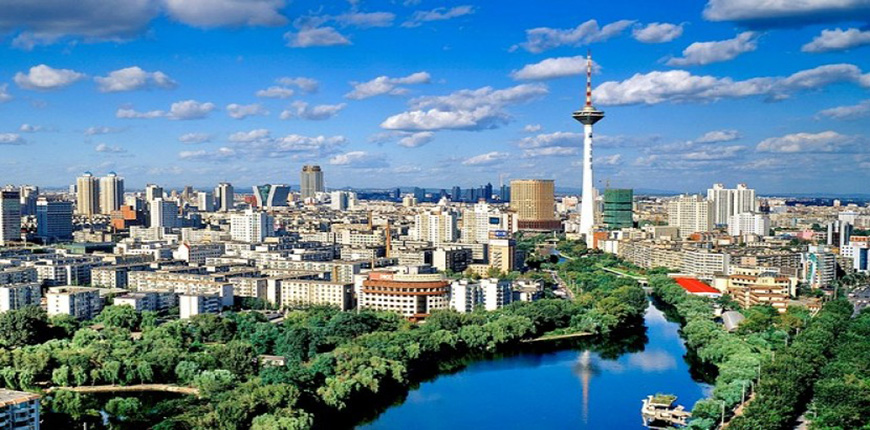Although Beijing, Shanghai, and Guangzhou are the most famous cities in China many would make the argument they are not the best to live or travel within. A second-tier city in China is pure speculation as the government has not released any official guidelines to a classification system.
Below is our list of the top 10 best second tier cities to spend time in.
10. Xi’an

Xi’an is most famous for its Terracotta Warriors, which have become an international symbol of China’s history. The capital city of 13 different Chinese dynasties, Xi’an has a long and storied history. Many dynasties from about 3,000 to 1,000 years ago had their capital city here, which is how it came to be called the fountainhead of civilization for China. Xi’an is home to a large muslim population whose culture and cuisine can be found in the Muslim Quarter. Outside of the city there are a few national parks to hike in and take in beautiful views of the Yangtze.
9. Chongqing

Formerly a part of the Sichuan region, Chongqing has a heavily Sichuan influenced cuisine with some claiming it has the hottest place to live or eat in China. During the Japanese occupation of Nanjing, Chongqing was the capital of China. The city has experienced growth due to its unique geographic position on the Yangtze river. Chongqing has a section named Old City for obvious reasons, that can offer a look into the history of the city. Much larger sections of the city are dedicated to industry as Chongqing continues to thrive economically.
8. Tianjin

From 1860 to 1903, the United Kingdom, the USA, France, Germany, Japan, Russia, Italy, Belgium and other western nations compelled the Qing regime to cede eastern Tianjin to them, dividing it up between themselves. Today, Tianjin boasts the largest artificial harbor in northern China with 30 different sea routes leading to over 300 of the world’s ports, a magnet for international trade now more than ever. Distinguished from other cities by the Tianjin Eye and its streetscapes of colonial era buildings, a residue of its status as a Treaty Port after 1858, Tianjin has some of the most interesting architecture in China.
7. Shenyang

Shenyang is the capital of Liaoning Province known for its clean air and natural scenery. The city has centuries of history including being the location of Nu’erhachi’s imperial palace where he was laid to rest in one of the first two imperial tombs of the Qing Dynasty, Fuling Tomb. The imperial palace and the two tombs are all listed by UNESCO as World Heritage Sites. It was in Shenyang that the Russian army was defeated by the Japanese in 1905. The city has developed since, like all Chinese cities, and the older architecture is now not so easily seen in this massive city. The city is home to Liaocai (??), and a large Korean and Mongolian population, who operate barbecue stands on the street corners of the city.
6. Ningbo

Ningbo is directly connected to Shanghai by the Hangzhou Bay Bridge which has bolstered an already booming economy which is unique in that state-owned corporations only make up less than 20% of the area’s GDP. The local GDP per capita is about three times the national average and Tianyi Square is a major shopping area that benefits from the higher amount of wealth. Ningbo’s tourist industry includes museums, a few historic sites downtown with temples, nature reserves, and preserved ancient towns in the countryside.
5. Wuhan

The city fell under siege by the Japanese during WWII and was liberated in 1949. With the opening of China, Wuhan was reopened in 1992 for the first time since the revolution. Today, Wuhan is one of China’s largest cities and remains an important center of commerce. While many visitors overlook Wuhan as just another city, beneath its industrial exterior a rewarding tapestry of history and cultural arts awaits. Filled with many ancient temples and even a sex museum there is years worth of exploring to do in Wuhan.
4. Hangzhou

It is one of the most important tourist cities in China as well as being the ‘tea capital’, famous for its natural beauty, historical and cultural heritage. Hangzhou and its West Lake (??; Xihú) have been immortalized by countless poets and artists. The city was the capital of the Southern Song Dynasty from 1127 until the Mongol invasion of 1276. The city’s population is estimated to have been as high as one million in those days, making it the largest city in the world at the time. Hangzhou has street markets for just about every good, ranging from electronics to silk to pet parrots.
3. Suzhou

Filled with canals, Suzhou is most known for its amazing museums and many historic temples. In addition to its reputation for history, Suzhou has grown into a major center of joint-venture high-tech manufacturing and currently boasts one of the hottest economies in the world. It is the world’s largest single producer of laptop computers. The Suzhou Industrial Park (SIP) in the east, and the Suzhou New District (SND) in the west, are home to factories from numerous North American, European, East Asian, and Australian companies. Suzhou has both China’s culture and history as well as the explosive economic growth.
2. Nanjing

Often mentioned for historical reasons the Southern Capital has a lot more to offer than a reason to despise imperialism. Rumored to be the place of birth for Peking Duck, Huaiyang Cai combine salt and spice to make fresh ingredients explode with flavor. Compared to Beijing and Shanghai, Nanjing offers a much slower paced lifestyle. Filled with parks and little shops Nanjing has plenty to do on the weekends or a well-earned day off.
1. Chengdu

Chengdu is a city many expats call home for its place as an international business and travel hub. It is most famous for its cuisine, laid back lifestyle, and lower cost of living comparative to first tier cities. Chengdu is home to the high-tech zone a booming economic region for high tech firms in China to find tax incentives and lower cost of labor. Many of the Fortune 500 companies are also in Chengdu drawing international talent from all over the world. Chengdu has all of the luxuries of a first-tier city with a complex metro system, diverse choice of international restaurants, and surrounding scenery Chengdu has earned the number one spot on our list.
HONORABLE MENTIONS
It was incredibly difficult to narrow down our list to ten so we felt we would mention a few worth visiting. Some we chose not to include because their glory days have past while others we felt still have room to grow.
Dalian

Dalian is the largest port city in northern China and formerly the southern tip of the Trans-Siberian rail. The city is a peninsula surrounded by beaches and accented with Japanese and Russian architecture.
Fuzhou

The city where your shoes could have very well been made in, Fuzhou hosts Nike and a Taiwanese firm that produces for both Adidas and Reebok. Directly across from Taipei, Fuzhou is famous for its ports, shipyards, and beaches.
Qingdao

Qingdao is regarded as one of the most beautiful cities in China. The downtown area is filled with hotels along the beaches and docks. Previously, this area was occupied by Germans who left their mark on the city architecturally and with the most famous Chinese brewery Tsingtao.
Taiyuan

Located next to the Fenhe River and surrounded by mountains, Taiyuan is supported by heavy industry and mining. In terms of culture and sightseeing it is most famous for the Twin Padogas and the carvings at Chongshan Temple.
Jinan

Nicknamed the City of Springs because of the many artesian wells that pop up among the city, Jinan is best done as a day trip out of Beijing. Jinan is one of the oldest cities in China with “eggshell pottery” that dates back over a thousand years.
Harbin

China’s northernmost city Harbin is best known for the annual ice festival, but has a lot more to offer. The city is filled with 20th century Russian architecture from when White Russians escaped from the Soviet Union. The glory days for Harbin seem to have passed as unemployment rates are high among an aging workforce.









